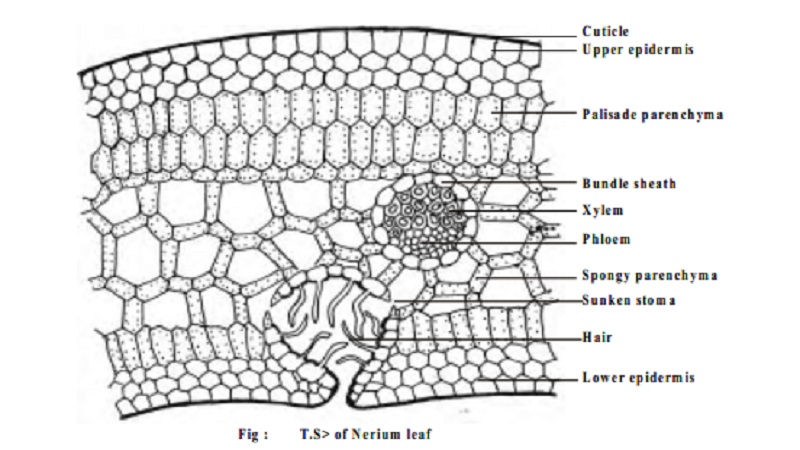Chapter: 11 th 12th std standard Bio Botany plant tree Biology Higher secondary school College Notes
Morphological, Anatomical and Physiological Adaptations of Xerophytes

Morphological Adaptations of
1. The root system is very well developed with root hairs and root caps. e.g. Calotropis.
2. The roots are fasciculated as in Asparagus.
3. Stems are stunted, woody, dry, hard, ridged, and covered with thick bark, may be underground, e.g. Saccharum. In Opuntiaphylloclade is covered with spines.
4. Stem is covered with thick coating of wax and silica in Equisetum or dense hairs as in Calotropis.
5. Stems may be modified into a thorn e.g. Ulex or cladodes e.g. Asparagus.
6. Leaves are very much reduced, small scale-like, appearing only for a brief period (Caducous) sometimes modified into spines or scales as in Casuarina, Ruscus, Asparagus.
7. Lamina may be narrow or needle like as in Pinus or divided into many leaflets as in Acacia or succulents as in Aloe.
8. In Euphorbia and Zizyphus jujuba stipules become modified into spines.
9. Xerophytes like Calotropis have hairy covering on the leaves and stems to check transpiration.
Anatomical Adaptations
1. Root hairs and root caps are well developed in Opuntia.
2. Roots may become fleshy to store water as in Asparagus
3. In succulent xerophytes, stems possess a water storage region (thin walled parenchyma cells)
4. Stems of non-succulent xerophytes show a very thick cuticle, well developed epidermis with thickened cell wall, several layered and sclerenchymatous hypodermis e.g. Casuarina.
5. The stems have sunken stomata and well developed vascular and mechanical tissues.
6. Leaves show well developed cuticle, succulent leaves in Aloe, multilayered epidermis in Nerium, sclerenchymatous and several layered hypodermis in Pinus, bulliform cells in Sugarcane.
7. Mesophyll is well differentiated and vascular tissues and mechanical tissues are well developed.
Physiological Adaptations
1. The stomata of these plants open during night hours and remain closed during the day. This unusual feature is associated with metabolic activities of these plants.
2. In xerophytes, the chemical compounds of cell sap are converted into wall forming compounds (eg) Cellulose, Suberin etc.
3. Some enzymes, such as catalases, perioxidases are more active in xerophytes than in mesophytes.
4. The capacity of xerophytes to survive in long period of drought is due to the resistance of the hardened protoplasm to heat and desiccation.
The Xerophytes have very high osmotic pressure, which increases the turgidity of the cell sap.
Related Topics